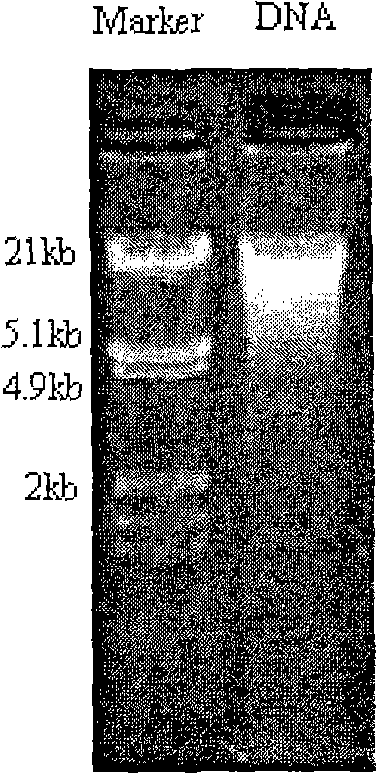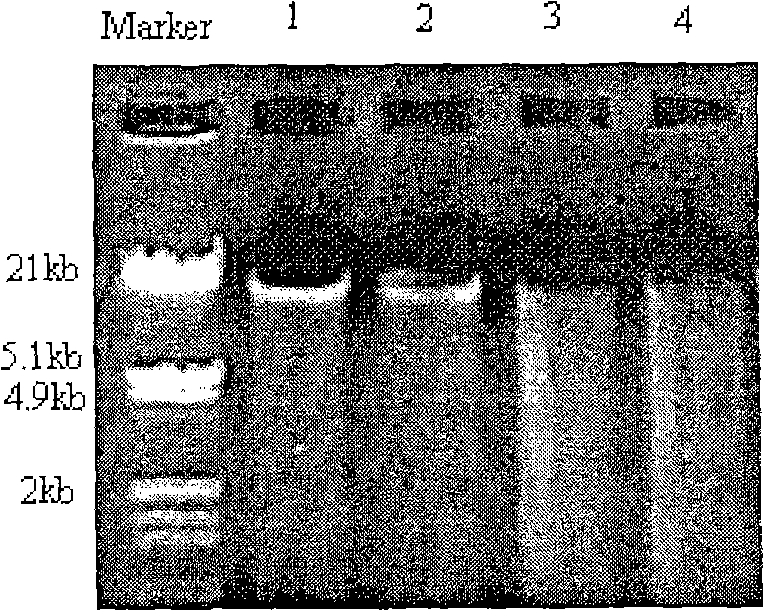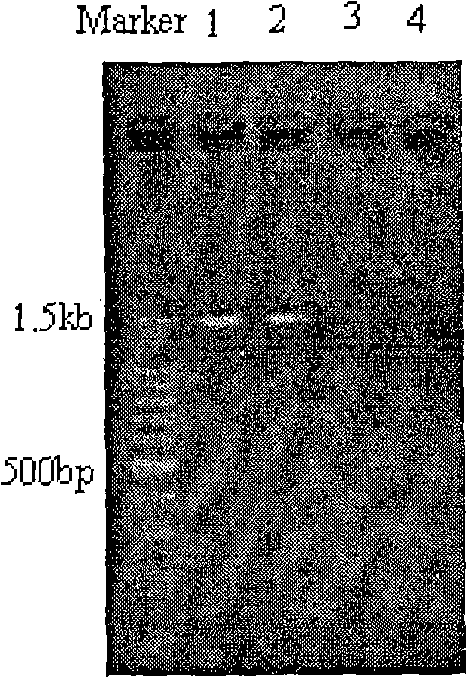Process for extracting microbe genome DNA in complex solid-state environment
An extraction method and microbial technology, applied in the direction of recombinant DNA technology, DNA preparation, etc., can solve the problems of DNA extraction obstacles, affecting molecular biology experiments, etc., and achieve the effect of low experiment cost
- Summary
- Abstract
- Description
- Claims
- Application Information
AI Technical Summary
Problems solved by technology
Method used
Image
Examples
Embodiment 1
[0016] Embodiment 1: Using the method of the present invention to extract the microbial genome DNA in the tidal flat mud of the Yangtze River Estuary in Chongming Island, Shanghai
[0017] The tidal flat is the tidal flooding zone between the high tide level and the low tide level of the coastal spring tide, and the tidal flat at the Yangtze Estuary of Chongming Island is not only infiltrated by sea water, but also washed by the Yangtze River. Therefore, a large amount of pollutants from the upper reaches of the Yangtze River have accumulated in the tidal flats, which also contain inorganic salts. In this saline-alkali environment rich in pollutants, most plants are difficult to grow, and only a few plant species exist near land. The microbial genome DNA in mudflat mud can be successfully extracted using aspects of the present invention.
[0018] The extraction process of the inventive method:
[0019] Weigh 0.84g of the sample, and extract it according to the following step...
Embodiment 2
[0022] Embodiment 2: Use the method described in the present invention and general method to the comparison of extracting microbial genome DNA from biogas slurry sample
[0023] Biogas digesters mainly use agricultural waste products, such as straw and other waste biomass materials, garbage and organic waste, and human and animal feces, and mix them to produce a mixed gas whose main component is methane under anaerobic conditions. Therefore, the composition of biogas slurry is quite complex, containing calcium, manganese, potassium, iron, copper, zinc and other metal ions, as well as humic acid, monosaccharides, polysaccharides, unsaturated fatty acids and certain antibiotics, which are harmful to DNA. The extraction and follow-up PCR and other molecular biology experiments caused great difficulties. Using the method described in the present invention to extract microbial genome DNA from biogas slurry samples is of higher quality than the DNA extracted using common methods.
...
Embodiment 3
[0031] Embodiment 3: Carry out PCR amplification 16S rRNA gene to DNA sample (using the method of the present invention and general method to extract microbial genome DNA from biogas slurry sample), the result shows that the DNA sample that uses the present invention to extract can carry out PCR smoothly Amplification, while those obtained by general methods cannot be amplified by PCR.
[0032] The DNA sample extracted in Example 2 was taken for PCR amplification. The PCR reaction system is 50μl: 10×buffer: 5μl, 10mM dNTP: 1μl, 10mM primer P0: 2.5μl, 10mM primer P6: 2.5μl, Taq enzyme (2U / μl): 1μl, DNA: 0.5μl, ddH2O: 37.5 μl. The sequence of the primers is: P0, 5'-GAGAGTTTGATCCTGGCTCAG-3', P6: 5'-CTACGGCTACCTTGTTACGA-3' (Weisburg et al., 1991), and the amplified target fragment is the full length of the 16S rRNA gene, about 1.5kb. The PCR parameters were designed as follows: initial denaturation for 5 minutes, 95°C; 30 cycles (denaturation for 30 seconds, 95°C; annealing for ...
PUM
 Login to View More
Login to View More Abstract
Description
Claims
Application Information
 Login to View More
Login to View More - R&D
- Intellectual Property
- Life Sciences
- Materials
- Tech Scout
- Unparalleled Data Quality
- Higher Quality Content
- 60% Fewer Hallucinations
Browse by: Latest US Patents, China's latest patents, Technical Efficacy Thesaurus, Application Domain, Technology Topic, Popular Technical Reports.
© 2025 PatSnap. All rights reserved.Legal|Privacy policy|Modern Slavery Act Transparency Statement|Sitemap|About US| Contact US: help@patsnap.com



